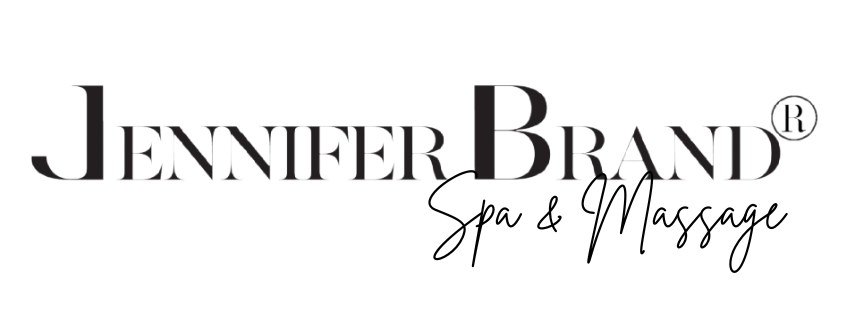Corrective Massage
Corrective Massage is for people who are searching for targeted relief. In this session your massage therapist will focus on one or two areas to help alleviate pain and discomfort related to those areas. This session may be performed like a regular massage or like a sports massage, so bring with you some comfortable gym-like apparel just in case. If you are searching for a massage to only focus on a specific area like your head, neck, back, legs, arms, hands, feet, etc. this is the session for you.
How is Corrective Massage Different?
The focus of a Swedish Massage is to achieve a state of peace and ease through the use of relaxation-based techniques. While a Swedish Massage may feel magnificent the purpose is to be relaxing. A Corrective Massage’s primary purpose is to help reduce pain and discomfort in targeted areas. While both are therapeutic in nature, a Corrective Massage utilizes advanced techniques and may include a treatment plan and self-massage techniques to maximize the effects of each session.
When receiving a Corrective Massage there are no add-ons. Instead, your therapist will use all the tools and techniques at their disposal to help you receive the relief you need. If the session calls for hot stone, cold stone, bamboo, hot packs, cold packs, ice massage, myofascial release, stretching or any other treatment it may be utilized in the service.
Will my Corrective Massage feel good?
Yes. Every massage you receive should feel good, even when the therapist is using advanced therapeutic techniques. In the management of pain, the goal is to down regulate the sympathetic nervous system, so we may up regulate the parasympathetic nervous system. In effect, we are lowering the intensity of your fight or flight mechanism so we may encourage you to be in a state of rest and digest.
In Corrective Massage the goal is to retrain your brain’s perception of touch and movement. When your body feels good, it encourages a positive feedback loop, which over time will retrain the way your brain interprets the signals it receives. The more pain you experience, the better your brain becomes at creating pain, the same is true with signals that feel good, so the focus of the treatment is for you to feel amazing.
There are instances when a degree of discomfort is beneficial, this often referred to as “hurts so good”. In these instances, we need you to communicate with us, so it never becomes “ouch that hurts!”
So yes, this massage should feel good.
Corrective Massage Methods
There are a few ways I approach each session. In most cases you will have about 5 minutes to explain the ways in which you hurt, when you hurt, how the pain feels and what makes it feel better or worse. Then, once your consultation is completed I will leave the room to gather the tools and resources I believe I will need, wash my hands and return to the treatment room. Some Corrective Massage sessions are performed while you are clothed. This is why it is important for you to bring exercise style clothes with you to the session. Other times they will be performed like a traditional massage, or some hybrid of the two. No matter how the massage session is performed, your modesty and comfort will be a priority.
Typically, at the start of your Corrective Massage session I will palpate areas of your body which I believe may be associated with your discomfort. The purpose of this step is to gather information. Once I believe I have enough information based on the consultation and the hands-on exploration I will begin the main portion of the massage.
In this session we will address up to two areas of concern. However, this does not mean I will only massage two specific points on your body. Instead, I will use my knowledge of anatomy and physiology in conjunction with my wealth of knowledge to determine the most appropriate techniques and approaches to address your specific needs.
My first focus is to encourage your central nervous system to trust my touch. This is important because if your body is contracting when I massage you, it will not have the desired results you are seeking. This means my first aim is to use techniques that feel good.
As your body starts to relax I will begin using techniques that are more rewarding. A rewarding technique is a sensation that feels like it is “doing something” or improving how you feel. Sometimes you may experience a sensation known as “hurts so good”. This sensation is an indicator that your body is responding well to the massage. It is important to know the difference between, “hurts so good” and “you are hurting me”. Hurts so good is a pleasure type of pain, and it can only be determined by you. If at any time it feels like the sensations are becoming painful I need you to let me know, so I may adjust accordingly.
The goal of a massage is not to endure 60-minutes of pain. Using pain to treat pain is like burning down a forest to prevent a forest fire. I do not need to crush your muscles for you to experience lasting results. Quite the opposite, I want you to experience peace and pleasure as I massage you, so you may experience lasting results.
In my Corrective Massage sessions, I appreciate communication. This is a hyper-focused treatment customized to meet your specific needs. I need to know when something feels wonderful, if it hurts and if you feel sensations in other parts of your body when I am addressing a specific area. It is also helpful to know how the pain or sensation feels. For many this level of body awareness is new, but as you pay attention to how your body feels, you will learn how to more effectively meet its needs.
What modalities, philosophies and approaches may be used in Corrective Massage?
- Myofascial Release: Myofascial Release is either performed with very little oil, or no oil at all. In some ways it may be classified as a type of dry effleurage. This means your therapist will perform slow techniques using light to medium pressure at an oblique angle to encourage the sensation of micro-stretching within the muscles. Myofascial release is a great way to enjoy deep tissue results without the potential discomfort often associated with deep tissue massage. It uses very little oil, because the technique needs to be able to gently grip the skin, so my hand may create a stretching sensation. To prevent discomfort the techniques are slow and meticulous, my hand only moves forward when the oils of your skin allow them to. Truly, the sensation of myofascial release feels spectacular.
- Deep Tissue Philosophy: The philosophy of Deep Tissue Massage is generally described as the process of addressing the muscles from a superficial depth and slowly moving deeper as each layer of soft tissue releases. This approach leads to a greater sense of wellness, because it reduces the degree of discomfort a client may experience throughout a massage. In essence the philosophy of Deep Tissue Massage governs the application of firm pressure, to lessen the pain and discomfort a client may feel after a massage. It is my focus to provide the safest, most enjoyable and effective application of pressure throughout your session.
- Cupping: Sometimes I will use cupping in the treatment. Cupping is used when I believe firm pressure is not appropriate or if a different approach is required to reset a client’s negative feedback loop of pain. When I perform cupping I always ask for consent first. When cupping is used there is a high likelihood that superficial, yet painless bruises will result. These bruises should disappear within 7—10 days.
- Warming & Cooling Liniments: In certain instances, the use of warming or cooling ointments may be applied throughout the session. In the case of clients with chemotherapy induced peripheral neuropathy, 1% topical menthol cream has been shown to reduce pain and discomfort. Anecdotally I have also experienced great results with menthol on my feet to address nerve pain after chemotherapy.
- Heated Bamboo: I often enjoy including heated bamboo instruments in my sessions. These tools allow added degrees of comfort and relaxation when used in combination with many of my advanced techniques.
- Hot Stone Therapy: Depending on the needs of a particular area I may use hot stones in your treatment session. Hot stones feel magnificent, which may help reduce your overall discomfort by reducing your stress and anxiety levels. Stress and anxiety magnify our perception of pain. In many instances when we have nonspecific types of pain it is due to the anxiety originating from the original pain source. When we can bring the anxiety down it often reduces the overall pain you are experiencing so we may focus on its source.
- Cold Stone & Ice Therapy: In the application of Corrective Massage, I use cold stones when an area is inflamed, hypersensitive or ticklish. The cold seems to calm the nerves, which allows me the opportunity to address the area with less discomfort. Ice Therapy is exceptionally effective in areas that are extremely hypersensitive or feel inflamed. When I use Ice therapy I always start with cold stones to ensure your body has been adequately prepared for the cold.
- Muscle Resistance Tools: In some instances, I will use muscle resistance tools like bands, and grip trainers when the hands are experiencing complex and difficult to palpate areas of pain. Typically, in these instances I will massage the muscles as they are being used to help facilitate proper function in all of their states.
- Stretching: Sometimes I will use stretching in my Corrective Massage sessions, the methods I use are to help improve regular range of motion with heavy consideration based on your body’s personal needs.
- Scalp Massage: While this may not seem like a Corrective Massage approach, in the instances when your stress levels are high, scalp massage has a tremendous value when attempting to reduce anxiety levels and encourage a sense of comfort and safety. Scalp massage has been shown to produce positive effects on stress hormone, blood pressure, and heart rate.
- Heat Therapy: In certain instances, I will use heat therapy in the application of Corrective Massage. Typically, I will apply heated flax seed pillows to the affected areas. This treatment has been found to provide pain relieving benefits and lumbar spine improvement for people with chronic low back pain.
Schedule Your Appointment Today!
If you are searching for a massage therapist who is going to focus on the aches and pains you are experiencing today schedule a Corrective Massage with Shawn White. If you have never experienced a Corrective Massage from him, you will enjoy 50% off your first session. Additionally, packages are available for those who are on a treatment plan.
About Shawn White
Shawn White is a prolific writer, artist, mentor, leader, and massage therapist. He has dedicated his life to helping others, and he lives to inspire, guide, and create opportunities for people to achieve their dreams. As a massage therapist he mentors new graduates, tutors students, and writes articles to help his peers explore their purpose and passion. As a cancer survivor he has learned how to use his challenges as his greatest source of strength. He believes every hardship is an opportunity to learn how to help others. His journey has shown him the value of humility, empathy, and the importance of navigating life creatively.

